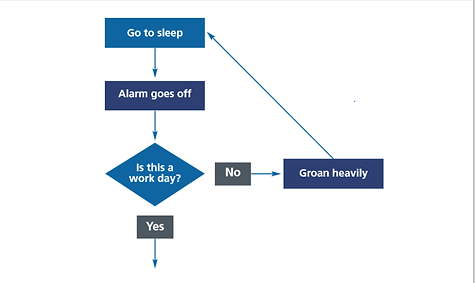2. STUDY THE SYSTEM
Before deciding on what changes your project will make, it is important to get a clear picture of how the system currently works. The QI approach encourages us to really find out about how the system works currently, such as who is involved and what are all the steps in the process. In SusQI, this includes understanding how and where environmental, social and financial resources are being used, highlighting problems and opportunities for improvement.
Where do I start?
Here we outline some of the tools which can be used to help study systems in a holistic way. They can be used together and form an excellent framework for this important step of your SusQI project. Find a list of all our downloadable project resources here.
Value Process Mapping
Process mapping is used to develop a 'map' of a process within a system; it maps how a process operates in reality rather than how it might ideally work. Process mapping can be used to help a team understand which steps are creating value, and also where waste or problems are occurring. Maps can also be annotated with the environmental, social and financial resource use.
Download this document to help learn how to create a process map. You can also download completed examples from outpatients, sexual health services and a pathway for a patient with unilateral tinnitus .
Example value process map of being woken by your morning alarm clock
Scanning for waste and recognising resource use

Example table for recognising potential waste in medical supply use
Assessing the social impacts of a current system or process as well as a proposed intervention helps us to identify unintended negative impacts on different groups of people involved (eg. patients, staff). Understanding the social outcomes for both patient and population groups as well as the service or system itself is key to achieving true sustainable value, according to the 'triple bottom line'.
Understanding the impact of certain social determinants of health (employment, housing, community involvement, social support structures etc) will help us to identify root causes of our problem. This will help us to design improvements which have the greatest impact by focusing on prevention of ill health, admissions or poor disease outcomes. This will enable us to reduce healthcare acitivity overall.
Use our scanning for social impacts and social determinants tables to help you to see where social value may be added to your project.
Scanning for social impacts and social determinants



